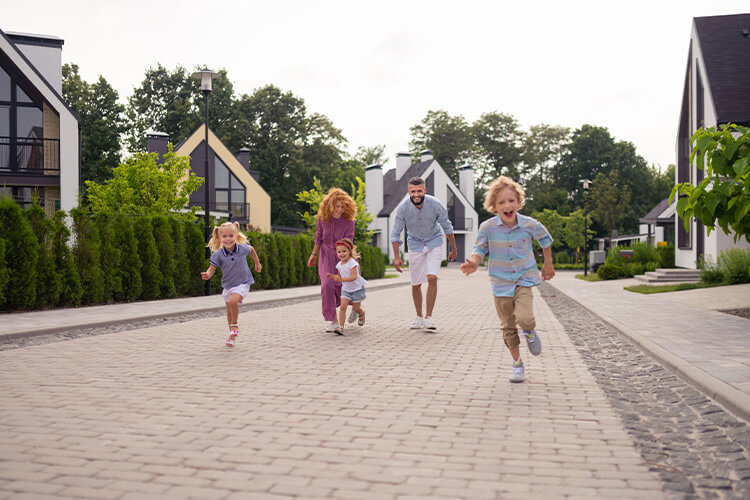How Homz Is Helping Suburban Cities Overcome their Growth Challenges
By homz | August 11, 2022
The US housing crisis remains one of the prevalent challenges of current times. While housing is one of the most critical needs for any human being, its inexplicable pricing and lack of diverse options remain a bane for ordinary citizens. As the US Census Bureau reports, in August 2021, the median sales price of new homes increased by 20.1% Y-O-Y, reaching US$ 390,000. As per the same source, the median price for the existing homes increased by 14.9%, reaching US$ 356,700 in August 2021.
The housing crisis in the US is twofold: an acute shortage of affordable housing and a paradigm shift in people’s living preferences. There is a dire need for a solution that addresses both challenges equally. That said, providing blocks of concrete is not going to cut. The proposition needs to be more elaborate where there is something for everyone.
Here are some key challenges in building affordable housing
Challenges in the housing market are diverse and can vary per county or state. This blog will focus on some of the most common barriers to building affordable housing.
-
Regulatory Challenges
Regulatory norms and guidelines vary in every state and province, making it even more challenging for builders to provide affordable housing solutions. These regulatory frameworks include subdivision regulations, private covenants, zoning rules, etc. Such legal barriers have become the major hurdle in developing affordable housing. Furthermore, real estate developers do not have ample legal tools to mitigate these challenges, rendering them incapable of providing an affordable housing community.
-
Zoning Laws
Federal and state authorities introduced zoning laws to prevent nuisances, i.e. separating industrial complexes from residential areas to avoid the impact of noise, smoke, and traffic. For instance, local zoning regulations prohibit building anything other than single-family detached houses. As a result, such laws create an insufficient supply of homes, eventually making the housing unaffordable and inaccessible. Furthermore, even where multifamily homes are allowed, specific zoning regulations like minimum lot sizes and caps on building heights limit affordable housing development. Building affordable housing would require a significant reform in the zoning laws.
-
Land Value Tax
While land value tax has advantages, pure land value taxes that exempt structures altogether are rare in practice. For instance, if an owner is to build a parking lot in downtown LA or Boston, under property tax, the owner would have to pay more taxes if they build an apartment building in that place. However, under the land value tax, the owner can develop an apartment, office space, or even a parking lot, while facing the same tax. Hence, it is imperative to bring critical reforms in land value taxes.
Opportunities in Affordable Housing
While the above mentioned challenges remain prevalent, builders have lucrative opportunities to provide affordable housing units. Novel solutions like health-focused multifamily housing communities are emerging as the most suitable alternatives.
-
Financial Support
Financial challenges are highly prevalent among both renters and builders. Renters face several financial barriers, especially those in lower-income brackets. To mitigate such barriers, assisting renters is an effective solution to improve their financial position and credit scores. These initiatives help them achieve homeownership. Furthermore, using rent payment data to determine creditworthiness can lower the cost of capital for renters.
-
Building Wellness-centric homes
The concept of wellness-centric homes is not entirely new. However, today’s housing crisis compels us to view this concept differently. A wellness-centric housing community will positively influence human health and progress, with a keen emphasis on endorsing a healthy lifestyle, availability of free spaces, an eco-friendly atmosphere, and all the necessary amenities. These communities also provide easier access to essential facilities like schools, public transport, and hospitals. As a result, these communities are more affordable to live in than other housing options.
Another crucial aspect of these communities is providing a sense of being connected to nature. As the renowned professor of psychology, Dr. Peter Kahn, says, “Humans have social and moral relationships with other people, but isn’t that also the case with nature?” Taking a leaf out of Dr. Khan’s book, wellness-centric sustainable communities enable families to rekindle their relationships with nature.
-
Using Existing Housing to provide affordable houses
Another smart way to cater for the unmet demands of affordable housing is to utilize existing housing and land. Such housing solutions can easily accommodate students and working individuals, creating a comfortable and integrated community. Moreover, certain housing solutions focus on integrating students with senior citizens, which offers the benefit of companionship to older adults and friendly support to the students.
Final Thought
While there is a massive gap in the affordable housing market, it also provides a significant opportunity for builders to capitalize on it. It is also true that there has to be a remarkable overhaul in the regulatory framework on both federal and state levels. Homz, the first national housing company in the US, is building an affordable, wellness-centric community nationwide.
Our communities can solve the twofold problem mentioned earlier. A great deal of thought has been put into where we are focused on offering health-focused multifamily housing communities, which will become the go-to solution for the crisis of affordable housing. Cities with such communities will thrive as many critical aspects of the housing crisis like affordability, cost of living and standard of living are addressed with our housing solutions. In the long run, Homz communities will inspire people and cities to move in the right direction of attaining affordable housing.


 info@homzglobal.com
info@homzglobal.com






















